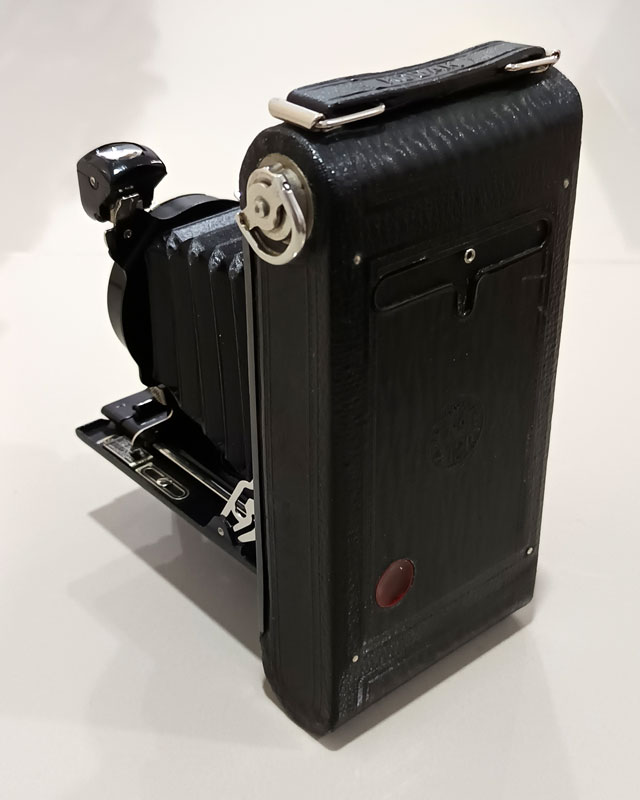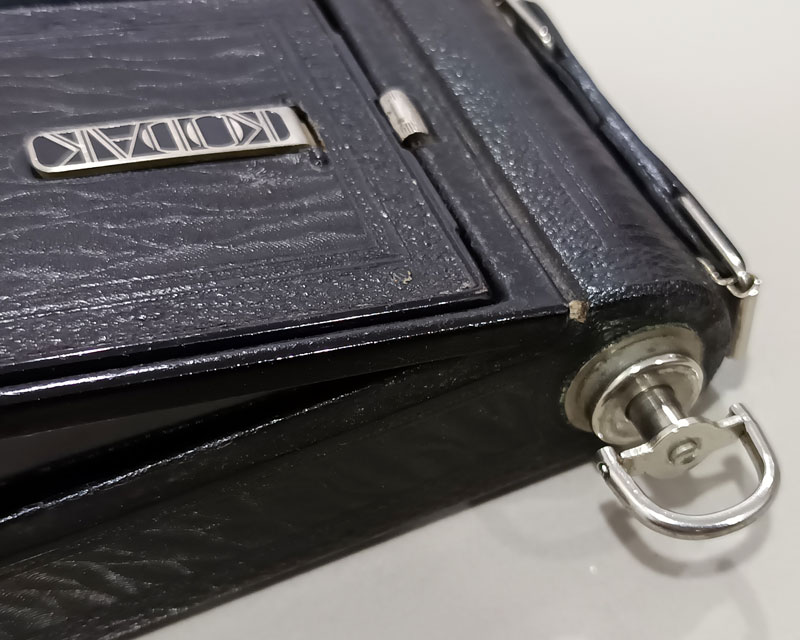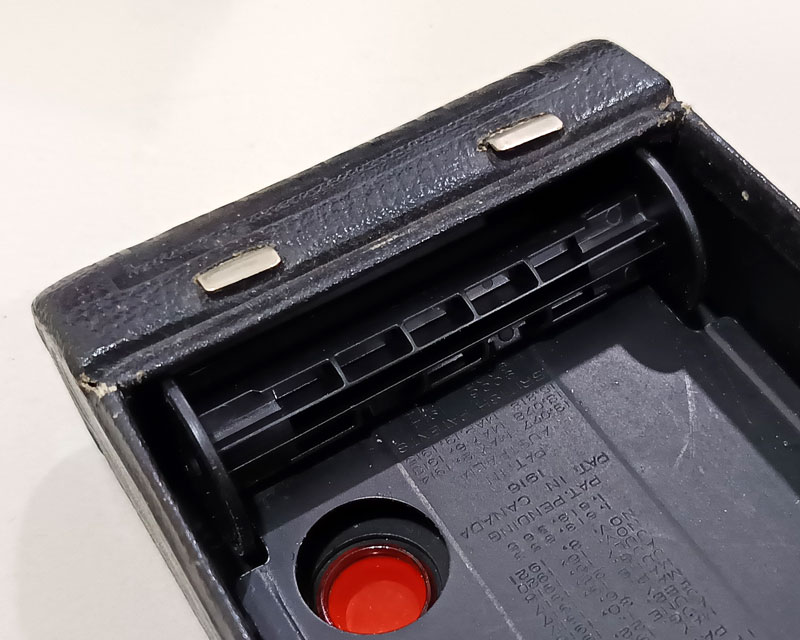I wanted this camera because of its appearance and because I liked the word KODAK on the hinge for setting up the camera, on the cover in front of the lens. It has a beautiful Art Deco style. This camera model was produced from 1926 - 1932. It was a folding camera, easy to carry, and used 120 roll film, which is commonly used today. It took pictures of about 6x9 cm. in size, with 8 pictures per roll. It was the last Kodak camera to use 120 roll film. After this, the roll film format would change from 120 to 620 and 116 to 616, which is a roll film format unique to Kodak.
Autographic: The camera has a slot at the back of the film that can be slid open to record data using the included stylus on the back of the film. The film used must be a type specifically for Autographic, which is no longer produced. The camera I got did not come with a stylus. ...
According to the camera brochure, around 1926, this camera cost $19.
In today's (2024) price, it would be $338.85 about 17,000 baht.
Buying a cheap old camera from abroad, you have to accept it a little. Even though we look at the picture, ask for details, there are still some things that we cannot see because we did not actually hold the camera. The camera may not be usable or there may be a problem with some parts of the camera's operation. Sometimes you can fix it yourself. If not, try to find a repairman who can fix it. Or in the end, if it really cannot be repaired, consider it as getting an old box to display or use as a paperweight. When looking at the picture, on the front of the camera, there is a short original shutter release cable attached to the camera. But the seller may not have understood, somehow stuffed the cable into the camera. After folding the cover, it broke. What a shame.
Let's take a look at the details of this camera.

Front and back view of the camera when folded The camera looks like a rectangular block, as shown in the image above.


On the front, the lens cover has a button to open the front cover. The vertical tripod is foldable metal. There is a beautiful Kodak Art Deco logo. There is a sliding set to remove the lens set to insert the film and the back cover.
On the back, there is a long, horizontal slot that can be opened and closed for recording messages on the film called Autographic. Currently, it is no longer produced and sold. Next is a embossed stamp on the leather sheet, indicating that it uses 120 roll film. And at the bottom is a red transparent slot for viewing the number of shots behind the 120 roll film.


When you open the front cover, you will see the lens assembly.
Pull the round button on the front of the lens to slide the lens out along the rail until it stops.


Camera appearance, front and rear when ready to use.

Front view of the lens assembly when pulled out and ready for use.
The lens that comes with this camera is a Kodak Anastigmat 105mm. f6.3-32 which has a wider aperture. From what I've seen, it's f7.9-45 with four shutter speeds to choose from: T, B, 1/25 and 1/50. With this shutter speed and a 6x9 cm. camera with a 105mm. lens, if you're holding it by hand there's a high chance that the camera will shake and the picture will be blurry. It's recommended to use a tripod or place the camera next to or close to something stable to prevent camera shake, and you should be able to get some good pictures.

On the right side of the lens is a screw that you turn to move the lens in and out and adjust the focus distance.

On the left side of the lens, there are numbers indicating the focus distance, showing both feet and meters.
When you turn the screw on the right side, the number on the scale will move accordingly.


The viewfinder is located on the left side of the lens and can be adjusted both vertically and horizontally.

On the right side, there is a white shutter trigger and a slot for a screw-type shutter release.
The bent black metal part is a slot for a stylus to write on the back of the film, which this camera does not come with.

On the bottom of the camera there is a button for rotating the film spool.


The dial for setting the camera horizontally when you want to set the camera on the floor or a flat table. It works like a tripod in vertical position.

The camera is positioned to take pictures in landscape orientation.

To push the lens back in, press the lens release button, which is a plate under the lens, before sliding the lens back into the camera.


Slide the lens lock button to pull the lens assembly out of the camera to load film.


Pull the lens assembly out of the camera to reveal the film slot on the back.


Pull out the film winding shaft to insert the film spool and push it back to wind the film.

Once the film is loaded, put the lens assembly back in place and lock it in place, then you can take it out and use it to take pictures.


The space for writing Autographic film on the back must be left open. Light can leak into the film. If possible, you can cover it with black tape to make sure light doesn't get in. Also, cover the red transparent circle. It would be even better if you have tape to cover it. Open it only when winding the film and close it quickly because old film is not sensitive to red light, so it can be left open. However, newer films are used to connect to all colors of light, so be careful not to let light in.
The Kodak Pocket No.1 is a mid-level Kodak folding camera designed for new photographers who want to learn how to use a wider variety of cameras without having to pay too high a price. The Kodak Anastigmat f/6.3 lens is a perfect combination of price and quality. The sharpness and contrast of the images from this lens are quite good. If you have the chance, try using it. Take photos one at a time, look at each frame. A roll of 120 film gets you 8 photos, which is just right. Take photos, develop the film, and enjoy looking at the images without having to wait long.
Sample Photo from Kodak No.1 Pocket
 Kodak No.1 Pocket Digital Contact Sheet
Kodak No.1 Pocket Digital Contact Sheet
Compare before and after photos scanned with film using Epson V600 and adjusted with Photoshop.


Kodak No.1 Pocket Sample Photo No. 001

|

|
Kodak No.1 Pocket Sample Photo No. 003

|

|
Kodak No.1 Pocket Sample Photo No. 004



Comments powered by CComment